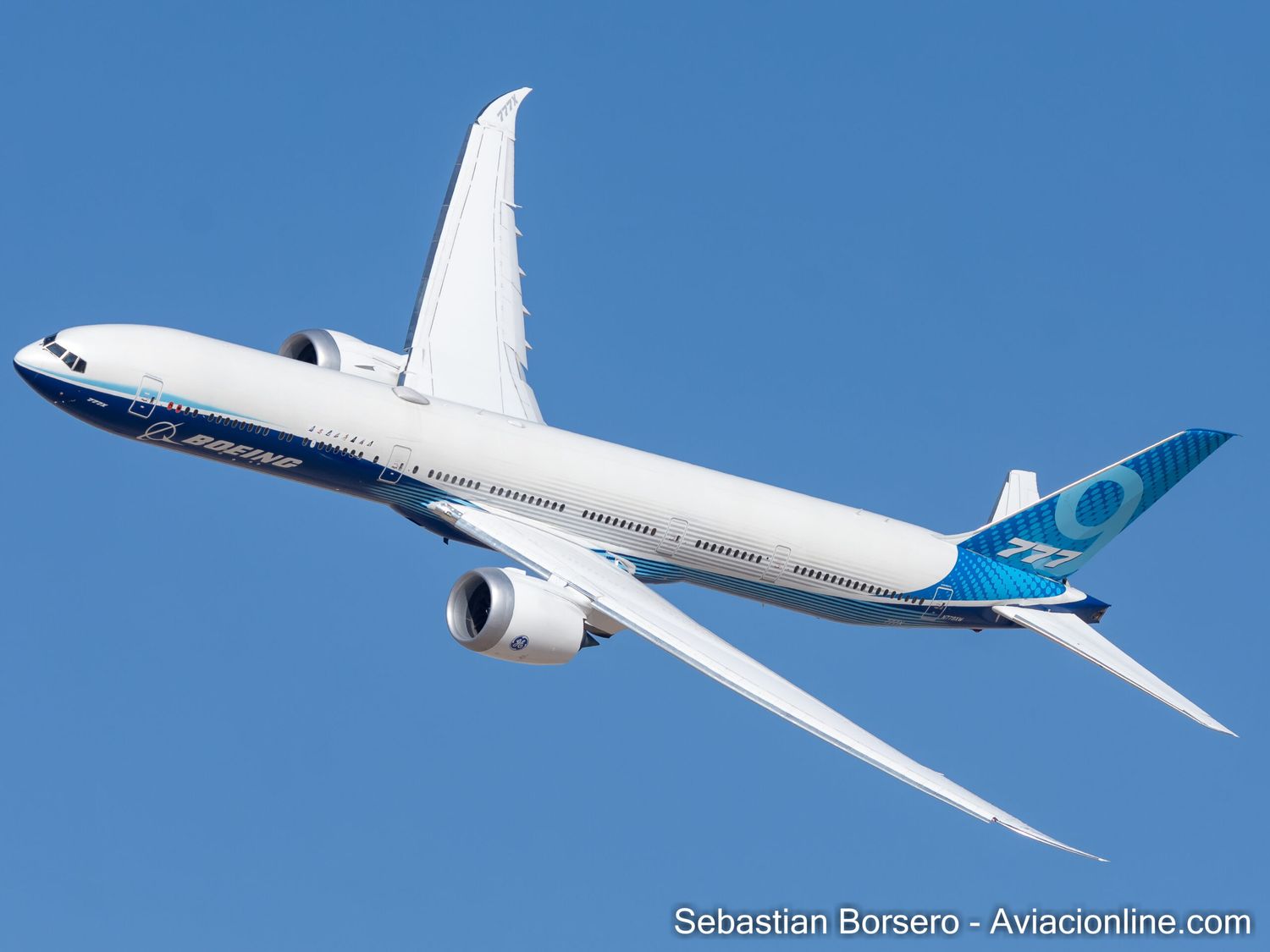The Boeing 777X development programme could be further delayed after a problem with the General Electric GE9X engines reportedly occurred during a flight assessing the aircraft’s thermal limits, Aviation Week Network reported.
Another delay in the programme?
While details of the event are not yet known, the only aircraft intended for test flights has momentarily ceased operations. Boeing and General Electric will review the situation, which could lead to further delays in the certification process for the largest twin-engine commercial jet ever built.
The problem occurred during a test flight of the prototype registered as N779XW on 6 October. So far, the American aerospace manufacturer has only confirmed a «problem» with the engine and assured that both companies will work to fix it, although no further details are known about the potential scope of the problem.
There is still no official confirmation of the resumption of the test campaign, nor is there any certainty about whether the nine-year-old programme will be further delayed. The two companies will have to consider whether this was an isolated case, a problem that could be repeated on other GE9Xs, or a design flaw.
According to the initial project schedule, the Boeing 777X should have been in service by now. However, programme delays and other problems at the manufacturer itself led to the postponement of its entry into the commercial market. Latest estimate is that the aircraft could begin operations in 2024.
The GE9X
The GE9X engine was designed specifically for the Boeing 777X. According to General Electric, it will consume up to 10% less fuel than its predecessor, the GE90, which was developed to power Boeing 777s currently in service. To achieve this, the diameter of the fan was increased to 3.4 metres: the fuselage of a Boeing 737 could fit inside it.
It is the largest and most powerful jet engine ever built. The GE9X generates up to 134.000 pounds of thrust. The front fan (the largest in history) is composed of 16 fourth-generation carbon fibre blades.
It also has parts made from advanced materials, such as lightweight ceramic matrix composites and 3D-printed components, which help improve overall efficiency and reduce greenhouse gas emissions.
See also: A light at the end of the tunnel: Boeing has hope for 737 MAX 7 and MAX 10 certification


Comentarios
Para comentar, debés estar registrado
Por favor, iniciá sesión